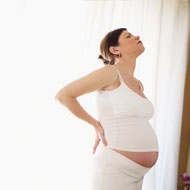- Hip Pain During Pregnancy
- Hot Flashes During Pregnancy
- Heartburn During Pregnancy
- Cold Sores During Pregnancy
- Canker Sores During Pregnancy
- Mouth Sores During Pregnancy
- Tongue Sores During Pregnancy
- Itching During Pregnancy
- IBS During Pregnancy
- Implantation During Pregnancy
- Infections During Pregnancy
- Indigestion During Pregnancy
- Increased Heart Rate During Pregnancy
- Incontinence During Pregnancy
- Hernia During Pregnancy
- Jelly Discharge During Pregnancy
- Jock Itch During Pregnancy
- Sacroiliac Joint During Pregnancy
- Kidney Pain During Pregnancy
- Kidney Failure During Pregnancy
- Kidney Changes During Pregnancy
- Knee Pain During Pregnancy
- Leg Cramps During Pregnancy
- Lower Back Pain During Pregnancy
- Lightheadedness During Pregnancy
- Labia Pain During Pregnancy
- Malnutrition During Pregnancy
- MRSA During Pregnancy
- Mild Cramping During Pregnancy
- Nausea During Pregnancy
- Ligament Pain During Pregnancy
- Muscle Spasms During Pregnancy
- Muscle Pain During Pregnancy
- Neck Pain During Pregnancy
- Night Sweats During Pregnancy
- Nerve Pain During Pregnancy
- Nipple Discharge During Pregnancy
- Nightmares During Pregnancy
- Nipples Burning During Pregnancy
- Nipples Peeling During Pregnancy
- Numb Hands During Pregnancy
- Ovary Pain During Pregnancy
- Ovarian Cyst During Pregnancy
- Ovulation During Pregnancy
- Ovarian Cancer During Pregnancy
- Overheating During Pregnancy
- Overeating During Pregnancy
- Normal Weight Gain During Pregnancy
- Joint Pain During Pregnancy
- Jaw Pain During Pregnancy
- Jaundice During Pregnancy
- Joint Stiffness During Pregnancy
- Ketones in Urine During Pregnancy
- Kidney Infection During Pregnancy
- Low Blood Pressure During Pregnancy
- Loss of Appetite During Pregnancy
- Low Iron During Pregnancy
- Losing Weight During Pregnancy
- Nipple Pain During Pregnancy
- Left Side Pain During Pregnancy
- Lactose Intolerance During Pregnancy
- Moles During Pregnancy
- Leaking & Leg Numbness During Pregnancy
- Labia Varicose Veins During Pregnancy
- Blurred Vision During Pregnancy
- Flu During Pregnancy
- HIV In Pregnancy
- Acne During Pregnancy
- Abdominal Tenderness during Pregnancy
- Swelling During Pregnancy
- Vaginal Swelling during Pregnancy
- Body Aches during Pregnancy
- Body Acne during Pregnancy
- Cervical Fluid during Pregnancy
- Dilation In Pregnancy
- Diverticulitis during pregnancy
- Bleeding During Pregnancy
- Upper abdominal pain during pregnancy
- Abdominal Pain During Pregnancy
- Back and Abdominal Pain During Pregnancy
- Migraines During Pregnancy
- Kidney Stones During Pregnancy
- Arthritis During Pregnancy
- Back Pain During Pregnancy
- Stress During Pregnancy
- Mood Swings During Pregnancy
- Insomnia During Pregnancy
- Bacterial Vaginosis Pregnancy
- Hellp Syndrome Pregnancy
- Epilepsy During Pregnancy
- Pregnancy Placental Abruption
- PTU During Pregnancy
- Diarrhea During Early Pregnancy
- Early Pregnancy Cramping
- Lower Abdominal Pain During Pregnancy
- Menstrual Cramps Pregnancy
- Belly Sizes During Pregnancy
- Gout In Pregnancy
- Diarrhea During First Trimester
- Abdominal Pain During Pregnancy First Trimester
- Vaginal Bleeding Pregnancy Causes
- Frequent Urination During Pregnancy
- Hair Loss During Pregnancy
- Tattoo During Pregnancy
- Vaginal Bleeding During Pregnancy
- Vaginal Discharge During Pregnancy
- Snoring During Pregnancy
- Skin Discoloration During Pregnancy
- Belly Growth During Pregnancy
- Sciatica During Pregnancy
- Shortness of Breath During Pregnancy
- Saliva in Pregnancy
- Premature Rupture Of Membranes In Pregnancy
- Tingling Hands Pregnancy
- Pelvic Girdle Pain During Pregnancy
- Protruding Navel During Pregnancy
- Hemorrhoids During Pregnancy
- Forgetfulness During Pregnancy
- Flatulence During Pregnancy
- Fainting During Pregnancy
- Light-headedness During Pregnancy
- Types of Vaginal Discharge During Pregnancy
- Sciatica Pain Treatment During Pregnancy
- Pelvic Discomfort During Pregnancy
- Migraine Headache During Pregnancy
- Migraine Relief During Pregnancy
- Nosebleeds During Pregnancy
- Dysgeusia During Pregnancy
- Bloating During Pregnancy
- Chloasma During Pregnancy
- Fatigue During Pregnancy
- Pitting Edema During Pregnancy
- Mask of Pregnancy
- Spontaneous Abortion
- Causes Of Spontaneous Abortion
- Restless Leg Syndrome During Pregnancy
- Excess Saliva During Pregnancy
- Migraine Treatment During Pregnancy
- High Blood Pressure During Pregnancy
- Sore Abdominal Muscles During Pregnancy
- Symphysis Pubic Dysfunction During Pregnancy
- Treating High Blood Pressure During Pregnancy
- Prugio of Pregnancy
- Hemorrhoid Treatment Pregnancy
- Fighting Pregnancy Fatigue
- Swollen Feet Pregnancy Remedy
- Nosebleed Early Pregnancy
- Vaginal Discharge in Early Pregnancy
- Cervical Dilation Pregnancy
- Clumsiness During Pregnancy
- Dizziness in Pregnancy
- Edema During Pregnancy
- Swollen Ankles During Pregnancy
- Hard Belly During Pregnancy
- Insomnia Early Pregnancy
- Effects of Smoking During Pregnancy
- Smoking During Pregnancy Risks
- Soft Cervix During Pregnancy
- Symptoms Of Depression During Pregnancy
- Weight Gain During Pregnancy
- Depression During Pregnancy
- Alcohol Effects During Pregnancy
- Alcohol During Pregnancy
- Marijuana Smoking During Pregnancy
- Quitting Smoking During Pregnancy
- Smoking During Pregnancy
- Cervix Bleeding Pregnancy
- Closed Cervix Pregnancy
- Stress During Pregnancy Effects
- Reducing Stress During Pregnancy
- Treating Constipation During Pregnancy
- Viral Infection During Pregnancy
- Cervix During Pregnancy
- Open Cervix During Pregnancy
- Small Cervix And Pregnancy
- Swine Flu During Pregnancy
- High Cervix Pregnancy
- Cervix Size During Pregnancy
- Pregnancy Breast Cancer
- Constipation During Pregnancy
- Friable Cervix and Pregnancy
- Checking Cervix During Pregnancy
- Low Cervix During Pregnancy
- Control Weight Gain During Pregnancy
- Weight Gain During Pregnancy Week By Week
- Tooth Decay During Pregnancy
- Stress In Early Pregnancy
- Tooth Extraction During Pregnancy
- Working During Pregnancy
- Toothache During Pregnancy
- Tooth Pain During Pregnancy
- Long Cervix During Pregnancy
- Thin Cervix During Pregnancy
- Cervix Changes In Pregnancy
- Itchy Belly During Pregnancy
- Low Platelets During Pregnancy
- Pregnancy Metallic Taste
- Itchy Skin During Pregnancy
- Brown Discharge During Pregnancy
- Pregnancy Changes
- Chickenpox And Pregnancy
- Cholestasis of Pregnancy
- DVT During Pregnancy
- Fibroid Uterus During Pregnancy
- Fifth Disease during Pregnancy
- Yeast Infection during Pregnancy
- Pelvic Arthropathy During Pregnancy
- Diabetes During Pregnancy
- Cervical Cancer During Pregnancy
- Sexually Transmitted Diseases During Pregnancy
- Thyroid Disease During Pregnancy
- Urinary Tract Infections During Pregnancy
- Hyperthyroid During Pregnancy
- Hypothyroid During Pregnancy
- Placenta During Pregnancy
- Dermatoses Of Pregnancy
- Gestational Trophoblastic Diseases During Pregnancy
- Anaemia During Pregnancy
Managing Posterior Pelvic Pain During Pregnancy
Pregnancy isn’t an easy time for any woman, and back pain is a problem that is often associated with pregnancy. In fact, according to estimates, between 50% and 80% of women suffer from back pain during pregnancy. While it’s common, it isn’t something that you or your loved one should take lightly.
Not only does it make the pregnancy itself harder to deal with, but, in some cases, may also mean the start of chronic back pain if it isn’t handled correctly. Fortunately, back pain can be managed well, and.
.this should be done at the earliest to make sure that the delivery is happy and free of complicationsn
Pregnant women may face two kinds of back pain, lumbar back pain and posterior pelvic pain, the latter being much more commono Posterior pelvic pain is normally felt below the waistline, all the way past the tailbonen It can be felt on one side of the back or on both sides, and may sometimes extend even to the hips and upper thighsh It is important that this pain be properly diagnosed by a doctor, since the treatment for both is differentn
Symptoms of Posterior Pelvic Pain During Pregnancy
If you have any of these symptoms, then you may be suffering from posterior pelvic paini
- A deep, intense pain around the back side of the pelvis or pelvic bonen
- Radiating pain that may reach the groin or thighsh
- While the pain stabilises when lying down, it is normally worse when standing, walking on level ground or stairs, getting up from bed or while lying down or standing up from a low seata
- Sometimes, a burning sensation may be felt in the pelvisi
- Normally starts after the eighteenth week, but may even start earliere
Managing Posterior Pelvic Pain During Pregnancy
This pain is often managed by exercises and physiotherapy, which aims to strengthen the core muscles around the pelvic regiono Your doctor may also ask you to wear a sacro-iliac belt for quick pain reliefe Physiotherapy may include mobilisation of the hip, pelvis or back, myofascial release or muscle energy technique (MET)T Your doctor may also prescribe medicines or injections that can help relieve the paini
It is also important to watch your posture and body mechanics during this time, as this will greatly affect the paini Some steps that you can take are:
- Avoid lying on your back for too long, lie on your side (preferably left) insteada
- While getting out of bed, roll to one side first, and use your hand to raise your body to an upright positiono
- To get out of a chair, sit on the edge, lean forward till your head is above your knees, and use your hands on your knees to push yourself upu Keep your back straight, and tuck your tummy ini


